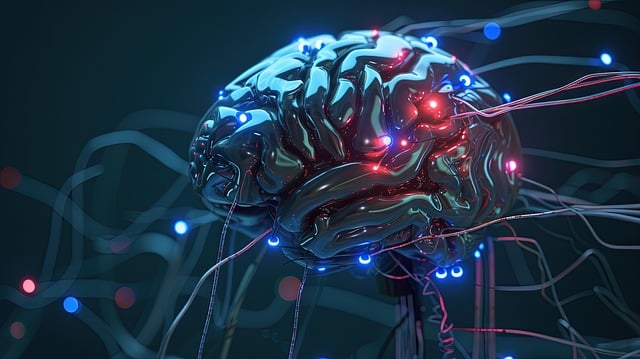Machine learning models strive to generalize well from data. However, achieving the right balance between accuracy and generalization can be challenging. Two common pitfalls in machine learning are overfitting and underfitting. Both issues significantly impact the model’s performance and its ability to make accurate predictions.
What is Overfitting and Underfitting in Machine Learning with Examples
Overfitting and underfitting are two sides of the same coin, representing extremes in a model’s training process. Overfitting occurs when a model becomes overly complex and adapts too closely to the training data, capturing noise instead of generalizable patterns. Underfitting, on the other hand, happens when a model is too simplistic to capture the underlying structure of the data, leading to poor performance both on training and test datasets. Together, these concepts highlight the importance of finding a balance that allows models to generalize well while still learning meaningful insights from the data.
Overfitting
Overfitting occurs when a machine learning model learns not only the underlying patterns but also the noise in the training data. This results in high accuracy on the training dataset but poor performance on unseen data.
For example, consider a decision tree model trained on a dataset of customer purchases. If the model creates overly complex rules to fit every single data point, it might not generalize well to new customer data.
Key causes of overfitting include:
- A model that is too complex
- Insufficient training data
- Noisy or irrelevant features in the dataset
Underfitting
Underfitting happens when a model fails to capture the underlying patterns in the data. It often results from an overly simple model that cannot adequately represent the data’s complexity.
For instance, a linear regression model used to predict housing prices based on multiple features might underfit if it only considers one feature, such as square footage.
Key causes of underfitting include:
- A model that is too simple
- Insufficient training iterations
- Ignoring important features during training
How to Identify Overfitting in Machine Learning Models
Identifying overfitting is crucial to ensuring your model performs well on new data.
Indicators of Overfitting
- High training accuracy but low validation accuracy A clear sign of overfitting is when the model performs exceptionally well on training data but poorly on validation or test data.
- Complex models with high variance Models like deep neural networks or decision trees with many layers or branches are more prone to overfitting due to their complexity.
- Overly specific predictions If your model makes predictions that only apply to very narrow cases, it might have learned the noise rather than the general patterns.
Solutions for Overfitting
- Regularization Techniques like L1 and L2 regularization can penalize large weights, forcing the model to focus on significant features.
- Pruning For decision trees, pruning involves removing unnecessary branches to reduce complexity.
- Increasing training data Providing more diverse and extensive datasets can help the model generalize better.
- Early stopping Monitoring the model’s performance during training and stopping when the validation error starts increasing can prevent overfitting.
Difference Between Overfitting and Underfitting in Data Science
Understanding the difference between overfitting and underfitting helps in selecting the right model and training strategy.
Overfitting vs. Underfitting
- Performance on training data Overfitting: High accuracy on training data Underfitting: Poor accuracy on training data
- Performance on unseen data Overfitting: Poor generalization Underfitting: Poor generalization and training accuracy
- Model complexity Overfitting: Too complex Underfitting: Too simple
Techniques to Avoid Overfitting in Machine Learning Algorithms
Preventing overfitting ensures your model is robust and performs well on real-world data.
Regularization
Regularization is a technique used to add a penalty for large coefficients in a machine learning model. By applying penalties, the model is encouraged to prioritize significant features while ignoring less relevant ones. Popular regularization methods include L1 (Lasso) and L2 (Ridge). These techniques ensure that the model does not overly rely on any single feature, helping to maintain generalization.
Regularization is particularly useful in linear and logistic regression, neural networks, and other algorithms prone to overfitting. It works by modifying the cost function to include the penalty, which prevents overly large weights.
Cross-validation
Cross-validation is a strategy to evaluate the performance of a model by dividing the dataset into multiple subsets. In k-fold cross-validation, the data is split into k groups, and the model is trained and validated k times, each time using a different subset for validation and the remaining data for training. This method provides a more robust evaluation by reducing the likelihood of overfitting to a specific subset of data.
By using cross-validation, you ensure that the model is tested across various splits of the data, offering a comprehensive assessment of its performance and generalization ability.
Dropout in neural networks
Dropout is a regularization technique used in training neural networks. It works by randomly disabling a fraction of neurons during each training iteration. This randomization forces the network to distribute learning across multiple neurons, preventing any single neuron from dominating the learning process.
Dropout improves generalization by making the network less sensitive to specific weights and reducing the risk of overfitting. It is especially effective in deep learning models with many layers, where the risk of overfitting is higher due to increased model complexity.
Conclusion
Understanding overfitting and underfitting in machine learning is critical for building accurate and generalizable models. Overfitting occurs when a model is too complex and learns noise, while underfitting results from overly simplistic models that fail to capture data patterns. By applying techniques like regularization, cross-validation, and data augmentation, you can strike the right balance and ensure your model performs well in diverse scenarios.






